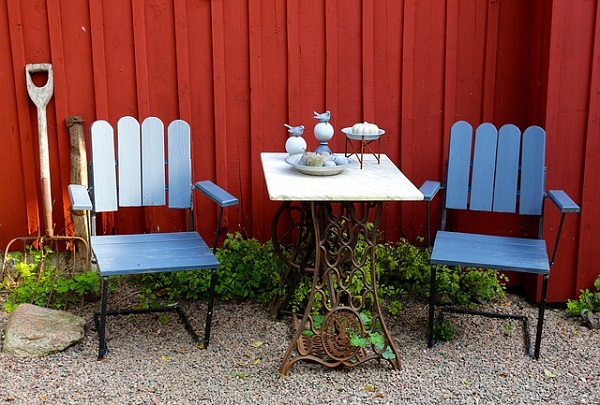
0800 377 7507
Get in touchTips on reviving garden furniture
After a damp and wet winter under covers or indeed in the shed, it’s time to breath life into our garden furniture. For tips on how to clean up wood, teak, plastic and metal furniture, please see our blog cleaning garden furniture. This blog is about giving you some handy tips on reviving garden furniture after its been given a good clean and remember to set about this task on a dry day!
Wooden furniture (for staining or painting)
- Clean all surfaces with warm water (scrub if necessary) and allow to dry thoroughly.
- Lightly sand down any rough parts, and wipe over with white spirit to remove any dust and grease.
- If wood is in bad condition, apply a primer if wanting to achieve a polished look. Allow this to dry.
- Stir the can of paint or stain thoroughly. Turn the furniture upside down, and, using a small brush, paint underneath and with the grain of the wood and then allow to dry.
- Turn the furniture the right way up, finish off, and allow to dry for at least eight hours. Apply a second coat if necessary.
Restoring the original colour
The easiest way to restore the original colour in wooden outdoor furniture, is to use a garden furniture restorer available in most DIY stores. This is a liquid that puts colour and sheen back into weathered wood.
- Remove excess dirt from old greying wood with a stiff bristle brush. Wash down and allow to dry.
- Apply garden furniture restorer liberally with a paintbrush.
- Use a mild abrasive scouring pad to work the restorer into the surface of the wood. Leave for no more than 15 minutes.
- Wash the restorer off with plenty of clean, warm water, and allow to dry.
- Sand down to remove any loose fibres, and to bring out the wood’s natural sheen.
Restoring Metal/ Iron garden furniture
There is nothing more unsightly than rusty old garden furniture, but have a little faith say MOLLY MAID. With a little bit of love and effort, it can look shiny and well cared for. Here are some top tips on how to do that.
- Removing flaking paint and rust
Removing rust and loose paint with paint scraper initially and then move onto a steel wool for a finer finish. This step is vital to achieve a really good finish.
- Wash
After sanding off the rust and paint flakes, it is important to ensure that the furniture is clean and then fully dry otherwise your new paint will flake off. Use washing up liquid and a sponge to wash down the furniture and place in the sun to dry off.
- Prepare the area in which you will paint
When using spray paint it is important to paint in a well ventilating area and remembering that spray paint can reach a 4 ft range around you so do bear that in mind and cover floors/ ground appropriately with sheets or plastic and keep children and pets away from the area.
- Spray paint
Choose a brand which is suitable on metal and for outdoor purposes as this will make it last longer. Spray painting well can take some time and patience. A top tip is that you should never put too much spray paint on one spot or it will begin to run, nor should you be too close to the item! So, spray the paint about 1 to 1.5 feet from the surface using even side to side motions. Start with painting the underside and then moving to the top side to avoid sticking or scratching. It is advisable to paint one coat and letting it dry before tackling another coat. Then, allow plenty of time to dry in a dry environment before touching so do consider the weather or alternative locations for painting.
Reviving garden furniture isn’t too challenging, but it will require some advance planning and time. There’s no doubt that you will be satisfied with the results.
